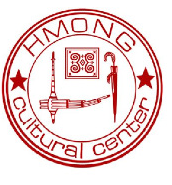Asian Americans in Wisconsin - History
Throughout the nineteenth century, there was very little immigration by the Asian population into Wisconsin1. United States immigration policies, spanning from 1882 to 1934, were used to ban Chinese, Indian, Japanese, and Philippine populations from immigrating to this country2. During World War II, over 100,000 Japanese American citizens were sent to internment camps, including Wisconsin's Camp McCoy3.
Immigration reform policy removed previously established restrictions based on national origin by giving preference to family reunification and political refugees with the 1965 Immigration and Nationality Act4. In more recent times, the Asian population has increased with the immigration of Hmong refugees from Laos. About 100,000 Hmong fled to this country as political refugees from 1975 to the 1990s5. Thirty-eight percent of Asians in Wisconsin are Hmong 6.
Hmong people were recruited during the Vietnam War as guerilla soldiers7. They were United States allies in a fight against communist rule. Their fight against the North Vietnamese caused them to live directly in the conflict and in constant danger8. After the war ended, the Hmong population sought refuge in neighboring Thailand refugee camps because of persecution and imprisonment9. With the sponsorship of organizations, such as the U.S. Catholic Conference and Lutheran Immigration and Refugee Services, the Hmong began to immigrate to the United States10. Many small towns in Wisconsin began Asian-refugee settlement programs, with the encouragement of religious leaders and the government11.
Currently, Wisconsin has the third largest Hmong population in the U.S; Minnesota and California have the top two populations12. The largest communities in Wisconsin are in La Crosse, Sheboygan, Green Bay, Wausau, and Milwaukee13. Cambodian, Laotian, Vietnamese, and ethnic Chinese are additional refugee populations found in Wisconsin14.











